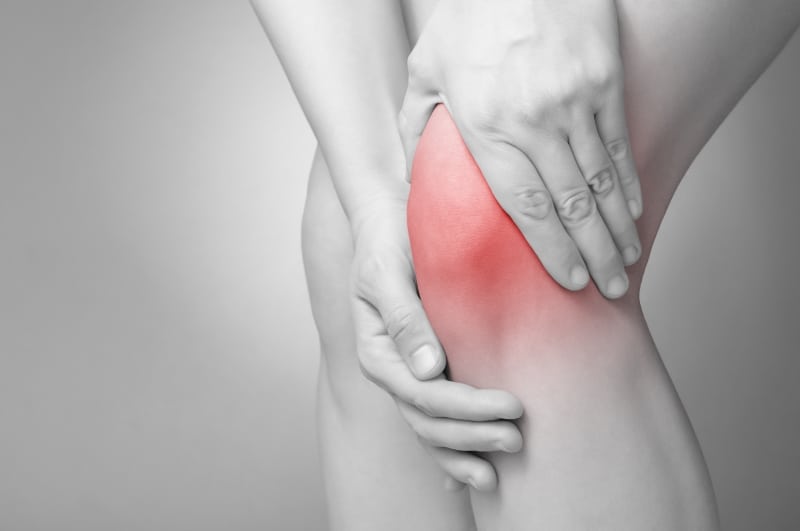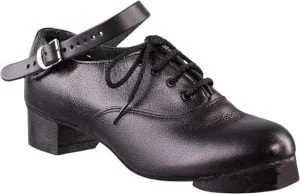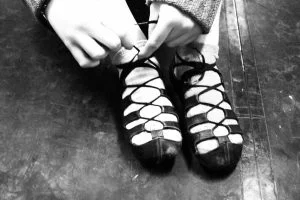Irish dancing is a form of dance that originated in Ireland and has been around for centuries. It involves intricate footwork, quick movements, and the use of specific shoes. People often wonder, “is Irish dancing hard on the knees?”
This article will discuss the impact of Irish dance on the knees, common injuries, and how to prevent them using dance medicine.
Table of Contents
Toggle
What is Irish Dance?
Overview of Irish Dance as a Form of Dance
Irish dancing is a traditional dance style that originated in Ireland in the 1700s. It was a way for people to come together and celebrate their culture, often in homes and local gatherings.
Irish dance has evolved over the years and is now performed in competitions and shows all around the world. It is known for its intricate footwork, quick movements, and use of specific shoes.
What Makes Irish Dance Different From Other Forms of Dance?
Irish dance is unique in that it emphasizes the use of the arms and upper body. Movements are very fast and precise, and dancers often keep their upper body still while performing complicated footwork.
Also, Irish dance has a strong focus on technique and requires a lot of practice and training. The shoes used in Irish dance are specifically designed to help dancers perform these complex movements.
What Are the Types of Irish Dance?
There are two types of Irish dance: hard shoe and soft shoe. Hard shoe dancing involves more heel clicks and stomping, while soft shoe dancing is more relaxed and involves more toe touches. Both soft shoe dancing and hard shoe dancing are performed at competitions. However beginners will only do soft shoe dances until they develop their skills.
What Are Common Dance Injuries?
What are the Most Common Injuries in Irish Dancing?
Like any other form of dance, Irish dance has a risk of injury. Common injuries in Irish dancers include sprains, strains, ankle and foot injuries, and stress fractures. Knee injuries are also very common in Irish dancing.
- Sprains and strains: These are common soft tissue injuries that occur when ligaments or muscles are stretched or torn. Ankle sprains are particularly prevalent in Irish dancers due to the intricate footwork and high-impact movements involved.
- Ankle and foot injuries: Irish dancing puts significant stress on the ankles and feet, making them susceptible to injuries such as stress fractures, tendonitis, and plantar fasciitis. These injuries can result from repetitive jumping and landing movements.
- Knee injuries: Knee injuries are highly prevalent in Irish dancing, accounting for a significant portion of lower extremity injuries. Patellofemoral pain syndrome, meniscal tears, and ligament sprains are common knee injuries in Irish dancers. The repetitive nature of certain dance movements and the impact on hard dance floors contribute to these injuries.
- Overuse injuries: Overuse injuries occur when specific movements or activities are repeated excessively, causing strain and damage to the muscles and joints. Irish dancing, with its high volume of jumps, landings, and twisting movements, can lead to overuse injuries in various parts of the body, including the knees, ankles, and feet.
What Are the Risk Factors for Dance Injuries?
Several factors can increase the risk of injury in Irish dancers. These include the type of shoe worn, the level of competition or performance, and the frequency and intensity of training. Other factors that can increase the risk of injury include poor technique, poor physical fitness, and poor nutrition.
- Shoe type: The type of shoes worn during Irish dancing can impact the risk of injury. Soft shoes, also known as ghillies, provide minimal support and protection for the feet and knees, making dancers more susceptible to injuries. Hard shoes, while offering more support and cushioning, can increase the risk of knee injuries due to the high impact and pressure placed on the knees during certain movements.
- Level of competition or performance: Dancers who participate in higher levels of competition or frequent performances may be at a higher risk of injuries due to the increased intensity, pressure, and demands placed on their bodies. The frequency and intensity of training and performance can contribute to overuse injuries and fatigue.
- Technique: Poor technique can significantly increase the risk of dance injuries. Inadequate body alignment, improper posture, and incorrect execution of movements can place excessive stress on joints, muscles, and ligaments, leading to injuries. It is essential for dancers to receive proper training and guidance to develop and maintain correct technique.
- Physical fitness: Insufficient physical fitness levels can increase the risk of dance injuries. Weak muscles, poor core stability, lack of flexibility, and inadequate cardiovascular endurance can contribute to imbalances, reduced stability, and compromised technique, making dancers more prone to injuries.
- Nutritional factors: Poor nutrition and inadequate hydration can impact an individual’s ability to recover and perform optimally. Insufficient nutrient intake can affect muscle strength, bone health, and overall energy levels, potentially increasing the risk of injuries.
- Overtraining: Overtraining occurs when dancers push their bodies beyond their limits without allowing adequate rest and recovery time. Insufficient recovery can lead to fatigue, weakened muscles, and compromised joint stability, increasing the risk of injuries.
- Previous injuries: Dancers who have had previous injuries, especially in the lower extremities, may be more susceptible to reinjury. Insufficient rehabilitation or premature return to dance without proper recovery can contribute to ongoing issues and increased vulnerability to future injuries.
How Does Irish Dancing Affect the Knees?
What Knee Injuries are Common Among Irish Dancers?
As mentioned earlier, knee injuries are very common in Irish dancing. These injuries can range from mild sprains and strains to more severe injuries such as tears and dislocations.In Irish dance, there are several knee injury patterns. These include patellofemoral pain syndrome, meniscal tears, and ligament sprains. These injuries are often related to the repetitiveness of specific dance movements and the landing impact on a hard dance floor.
- Patellofemoral Pain Syndrome (PFPS): Also known as runner’s knee, PFPS is characterized by pain and inflammation around the patella (kneecap) and the surrounding structures. The repetitive high-impact movements, such as jumps and landings, can lead to imbalances in the forces acting on the patella, causing irritation and pain.
- Meniscal Tears: Menisci are cartilage discs that act as shock absorbers in the knee joint. The twisting and pivoting motions in Irish dancing can put stress on the menisci, leading to tears. Meniscal tears can cause pain, swelling, and a feeling of instability in the knee.
- Ligament Sprains: Ligament sprains occur when the ligaments that stabilize the knee joint are stretched or torn. In Irish dancing, the ligaments most commonly affected are the medial collateral ligament (MCL) and the anterior cruciate ligament (ACL). These injuries can result from sudden changes in direction, improper landings, or excessive force applied to the knee joint.
- Patellar Tendonitis: Patellar tendonitis, also known as jumper’s knee, is an overuse injury that causes inflammation and pain in the patellar tendon, which connects the patella to the shinbone. The repetitive jumping and landing movements in Irish dancing can place strain on the patellar tendon, leading to inflammation and discomfort.
- Bursitis: Bursae are small fluid-filled sacs that cushion and reduce friction between tendons, muscles, and bones. Bursitis occurs when these bursae become inflamed. In Irish dancing, the prepatellar bursa, located in front of the patella, can become inflamed due to repetitive kneeling or friction caused by certain dance movements.
How Do Irish Dance Shoes Affect the Knees?
The type of shoe worn by Irish dancers can also have an impact on their knees. Soft shoes, also known as ghillies, do not provide much support or protection for the feet or knees and are often worn in competitions.
On the other hand, hard shoes provide more support and cushioning to the feet. However, they can also increase the risk of knee injuries due to the high impact and pressure placed on the knees during certain movements.
Can Knee Injuries in Irish Dancing be Prevented?
What Are the Prevention Strategies for Knee Injuries in Irish Dancing?
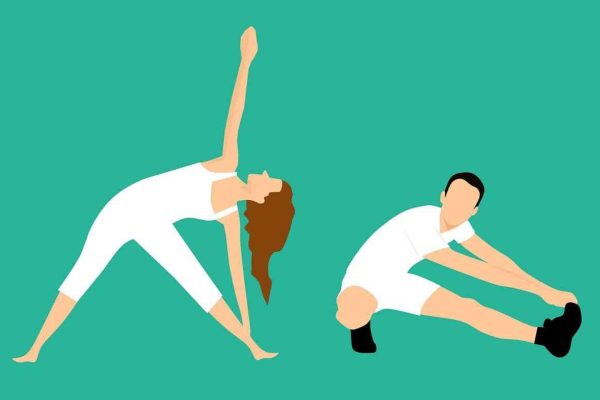
There are several prevention strategies that Irish dancers can use to prevent knee injuries. These include proper conditioning and warm-up exercises, wearing appropriate shoes, and improving technique.
Proper conditioning and warm-up exercises can help prevent muscle strains, sprains, and other injuries. Wearing appropriate shoes can also help absorb the impact and reduce the stress on the knees.
How Can Dancers Better Prepare Their Knees for Irish Dance?
Dancers can also better prepare their knees for Irish dance by incorporating strength training and flexibility exercises into their workout routine. This can help build strength and stability in the knees to prevent injuries.
What Are Some Tips for Irish Dancers to Avoid Knee Injuries?
Some tips for Irish dancers to avoid knee injuries include properly warming up before dancing, using proper technique, taking breaks when needed, and not overtraining.
How is Dance Medicine Involved in the Treatment of Knee Injuries?
What is Dance Medicine?
Dance medicine is a specialized field of medicine that focuses on the prevention, diagnosis, and treatment of injuries in dancers of all ages and skill levels. It involves a multidisciplinary approach, including sports medicine, physical therapy, and nutrition.
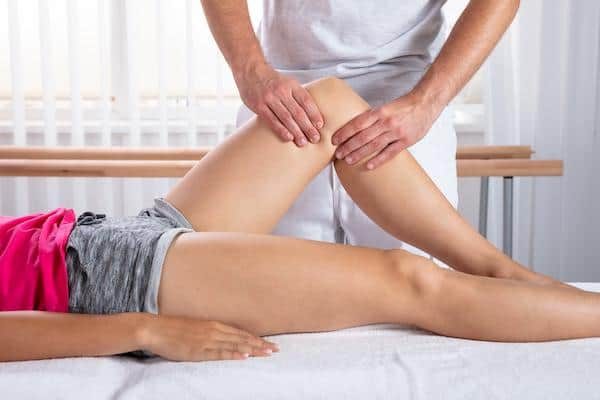
What Role Does Dance Medicine Play in Irish Dancing?
Dance medicine plays a crucial role in the prevention and treatment of knee injuries in Irish dancers. Specialists in this field can provide assessment, diagnosis, and targeted treatment. Different professionals offer their expertise: orthopedic, dance medicine physicians, sports psychologists, and sports nutritionists, among others.
What is the Role of Physical Therapy in Treating Knee Injuries from Irish Dancing?
Physical therapy is often used in the treatment of knee injuries in Irish dancers. It can help reduce pain and inflammation and improve range of motion and flexibility. A physical therapist with expertise in dance medicine can help dancers regain their strength and agility, so they can return to performances and competitions without pain and discomfort.
Here are some ways in which physical therapy can help in treating knee injuries:
- Assessment and Diagnosis: A physical therapist will conduct a thorough evaluation to assess the extent and nature of the knee injury. They will identify specific structures involved, assess joint range of motion, muscle strength, balance, and overall movement patterns to determine an accurate diagnosis.
- Pain and Inflammation Management: Physical therapists employ various techniques to manage pain and reduce inflammation in the knee joint. This may include the use of modalities such as ice or heat therapy, ultrasound, electrical stimulation, or manual therapy techniques to promote circulation and decrease pain.
- Range of Motion and Flexibility Exercises: Physical therapy incorporates targeted exercises to restore and improve knee joint range of motion and flexibility. These exercises aim to gradually increase mobility and reduce stiffness in the knee, facilitating a return to full functional movement.
- Strengthening and Stability Exercises: Strengthening the muscles around the knee joint is crucial for optimal stability and support. Physical therapists design exercises that target specific muscle groups to improve strength and stability in the knees. These exercises may include resistance training, balance exercises, and functional movements tailored to the demands of Irish dancing.
- Proprioceptive Training: Proprioception refers to the body’s awareness of its position and movement in space. Proprioceptive training is essential for dancers to maintain control, balance, and coordination. Physical therapists utilize exercises that challenge and enhance proprioceptive awareness to improve knee stability during dynamic movements.
- Technique Correction: Physical therapists can assess an Irish dancer’s technique and provide guidance to correct movement patterns that may contribute to knee injuries. They can offer specific cues and exercises to help dancers improve alignment, body mechanics, and weight distribution to reduce strain on the knees.
- Graduated Return to Dance: Once the knee injury has healed and the dancer has regained strength and flexibility, the physical therapist can guide the individual through a progressive return-to-dance program. This involves gradually reintroducing dance movements, monitoring for any signs of discomfort or limitations, and adjusting the rehabilitation plan accordingly.
FAQ
Q: Is Irish dancing hard on the knees?
A: Irish dancing can be hard on the knees due to the repetitive motion and impact involved in the dance. However, with proper technique and injury prevention measures, dancers can reduce their risk of knee injuries.
Q: What are some common overuse injuries in Irish dancing?
A: Some common overuse injuries in Irish dancing include plantar fasciitis, Achilles tendonitis, and patellar tendonitis.
Q: Are foot and ankle injuries common in Irish dancing?
A: Yes, foot and ankle injuries are quite common in Irish dancing due to the intricate footwork involved in the dance.
Q: Do many dancers experience injuries while Irish dancing?
A: While the majority of Irish dancers may not experience major injuries, a med at a single Irish dance company found that the incidence of injury was highest among elite adolescent Irish dancers.
Q: How many injuries per dancer are typically reported in Irish dancing?
A: According to a retrospective chart review of dancers from a single Irish dance company, the majority of injuries (68.9%) were reported by just one dancer per year. However, the number of injuries per dancer increased with level of skill.
Q: Are there any injury prevention measures that Irish dancers can take?
A: Yes, there are several injury prevention measures that Irish dancers can take, including proper warm-up and cool-down, wearing appropriate footwear, and ensuring general health and fitness.
Q: Do Irish dancers have a higher incidence of injury than ballet dancers?
A: The risk of injury may be similar between Irish dancers and ballet dancers. However, the type and location of injuries may differ due to the differences in dance techniques and footwear.
Q: What are some risk factors for injury in Irish dancing?
A: Some risk factors for injury in Irish dancing include inadequate warm-up, improper technique, overtraining, and previous injury.
Q: How do healthcare professionals evaluate and treat Irish dance injuries?
A: Healthcare professionals may use a variety of techniques to evaluate and treat Irish dance injuries, including physical therapy, imaging, and medication. Treatment may vary depending on the type and severity of the injury.
Q: Should dancers continue to dance through pain or injury?
A: No, dancers should never continue to dance through pain or injury. Doing so can worsen the injury and prolong recovery time.
Conclusion
Irish dancing does place a significant strain on the knees, making knee injuries a common occurrence among Irish dancers. Knee injuries, including sprains, strains, tears, and dislocations, are often attributed to the repetitiveness of specific dance movements and the impact of landing on hard dance floors. The type of shoe worn during Irish dance also plays a role, with soft shoes lacking support and protection for the knees, while hard shoes provide more cushioning but can increase the risk of knee injuries due to high impact.
However, there are various strategies that Irish dancers can employ to prevent knee injuries. Proper conditioning, warm-up exercises, and incorporating strength training and flexibility exercises into their routine can help build strength, stability, and flexibility in the knees. Wearing appropriate shoes that absorb impact and improving technique are also important factors in injury prevention.
The field of dance medicine plays a crucial role in the prevention and treatment of knee injuries in Irish dancers. Dance medicine specialists, including orthopedic physicians, physical therapists, sports psychologists, and sports nutritionists, can provide assessment, diagnosis, and targeted treatment to help dancers recover from knee injuries. Physical therapy is often utilized in the treatment process, aiming to reduce pain and inflammation, improve range of motion and flexibility, and restore strength and agility.
By implementing these preventive measures and seeking appropriate medical care, Irish dancers can minimize the risk of knee injuries and continue to enjoy the beauty and artistry of Irish dance while safeguarding their knee health. With proper precautions and care, dancers can maintain their passion for Irish dance and perform at their best without compromising their knee joints.

